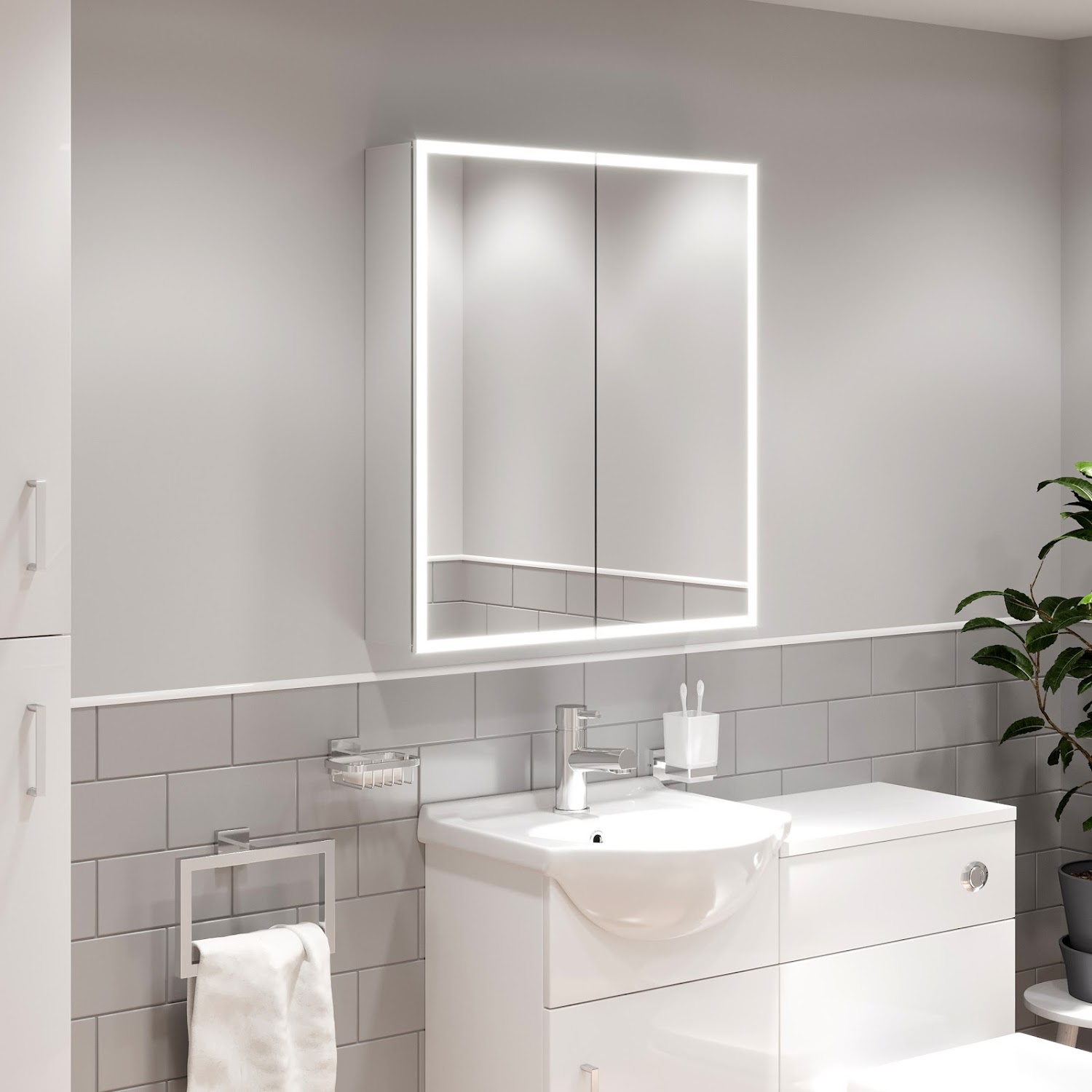Design & Installation Considerations for Large LED Bathroom Cabinets

The integration of a large LED bathroom cabinet significantly impacts both the aesthetics and functionality of a bathroom. Careful consideration of size, placement, and installation method is crucial for a seamless and effective outcome. This section explores these key aspects, offering practical guidance for successful implementation.
Cabinet Size and Placement Impact on Bathroom Design
The dimensions of the cabinet directly influence the overall bathroom design and its usability. A large cabinet can create a striking focal point, especially in smaller bathrooms where maximizing storage is paramount. However, in expansive bathrooms, an oversized cabinet might overwhelm the space, disrupting the visual balance. Placement is equally important. In a small bathroom, positioning the cabinet above a vanity maximizes vertical space and keeps the area feeling open. In larger bathrooms, a freestanding cabinet might serve as a stylish room divider, separating the vanity area from the shower or bathtub. For example, in a master bathroom with a walk-in shower, a large cabinet could be positioned on the opposite wall, providing ample storage and creating a sense of symmetry. Conversely, in a smaller powder room, a cabinet placed above a compact sink maximizes storage without compromising accessibility.
Installation Methods for Large LED Bathroom Cabinets
Installation methods vary depending on the cabinet’s design, the wall type, and the existing electrical wiring. Most large LED bathroom cabinets are designed for wall mounting. For drywall walls, sturdy wall anchors are essential to support the cabinet’s weight. Concrete or brick walls require different anchoring techniques. The electrical wiring for the LED lighting needs careful consideration. Ideally, the wiring should be installed before the cabinet is mounted, ensuring a clean and safe installation. It is crucial to adhere to all local building codes and regulations regarding electrical work in bathrooms. Improper wiring can lead to electrical hazards. For instance, a cabinet with integrated power sockets requires careful planning to ensure the placement doesn’t interfere with other bathroom fixtures or plumbing. Directly connecting the cabinet’s wiring to the main power supply is generally not recommended; instead, it’s better to use a junction box with appropriate safety measures.
Visual Representation of a Bathroom with a Large LED Bathroom Cabinet
Imagine a modern bathroom, predominantly white with sleek grey tiles. The focal point is a large, mirrored LED bathroom cabinet, spanning almost the entire length of one wall above a double vanity with integrated sinks. The cabinet’s frame is a brushed nickel finish, complementing the chrome fixtures. Soft, warm-toned LED lighting emanates from the cabinet, creating a calming ambiance. To the left of the cabinet, a walk-in shower is enclosed by glass panels, showcasing a rain shower head and stylish tile work. To the right, a free-standing bathtub with a minimalist design adds a touch of luxury. A large window allows ample natural light to flood the space, enhancing the overall brightness and creating a harmonious blend of modern elegance and functionality. The overall aesthetic is one of clean lines, minimalist design, and luxurious comfort.
Step-by-Step Guide for Installing a Large LED Bathroom Cabinet
Installing a large LED bathroom cabinet requires careful planning and execution. Here’s a step-by-step guide:
- Step 1: Preparation: Carefully read the manufacturer’s instructions. Gather all necessary tools, including a stud finder, drill, level, screwdriver, and appropriate wall anchors. Ensure the wall is suitable for supporting the cabinet’s weight.
- Step 2: Locate Studs: Use a stud finder to locate wall studs. Mark their positions accurately. This is crucial for secure mounting.
- Step 3: Electrical Wiring: If the cabinet requires electrical connection, consult a qualified electrician to ensure proper wiring and safety compliance. Ensure the power is turned off before working with electrical wiring.
- Step 4: Mounting the Cabinet: Using the marked stud positions, pre-drill pilot holes and securely attach the mounting brackets to the wall. Carefully lift the cabinet and attach it to the brackets, ensuring it is level.
- Step 5: Connecting the LED Lighting: Once the cabinet is securely mounted, connect the LED lighting according to the manufacturer’s instructions. Test the lighting to ensure it functions correctly.
- Step 6: Final Checks: Inspect the installation to ensure the cabinet is securely mounted, level, and the LED lighting functions properly. Address any issues before proceeding.
Potential challenges include uneven walls, incorrect stud location, and complex electrical wiring. Solutions involve using shims for uneven walls, carefully relocating mounting points, and consulting a qualified electrician for complex wiring situations.
